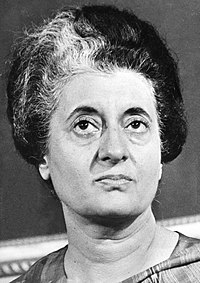
Photo from wikipedia
As Charles Dickens opined, “It was the best of times, it was the worst of times”, and many may argue this really could be just the worst of times in… Click to show full abstract
As Charles Dickens opined, “It was the best of times, it was the worst of times”, and many may argue this really could be just the worst of times in Emergency Medicine (EM). The SARS CoV19 virus pandemic may have created untenable longterm working conditions1; there is also grave concern about the future employment prospects of EM trainees due to a variety of factors. This concern has percolated quickly and may be one of the drivers leading to a marked decrease in applicants to EM residency in the 2022 NRMP Match, a trend that had otherwise been fairly consistently upward in trajectory since 2017.2 However, within Academic Medical Centers (AMC), at least, there may be cause for optimism in the form of collaboration with other healthcare providers. While the future is admittedly hard to predict accurately, what is clear is that physicians are not the sole purveyors of emergency services and, in the United States, advanced practice providers (APP) are widely employed to provide care in the Emergency Department (ED) setting. In this issue of Academic Emergency Medicine, Carpenter et al3 provide the results of a survey of department chairs who are members of the Association of Academic Chairs in Emergency Medicine and their affiliated residency program directors (PD). This survey, which contained responses from just under three quarters of the eligible chairs and under half of eligible PDs, demonstrated near ubiquitous presence of APPs in academic emergency departments, but the number and role varied dramatically. Of particular note, only 44% of respondent chairs noted that APPs and residents evaluated patients concurrently in high acuity care areas rather than the APPs only covering the high acuity care area when residents were not present. This is in direct contrast to 75% of PDs agreeing that EM residents should learn to be part of an interdisciplinary team but consistent with the result that only 15% of these programs provide opportunity for residents to supervise APPs during their training. Much of the current research around APP practice in the ED has focused on productivity,4 resource utilization,5,6 or simply characterizing the employment of APPs in EDs across the US.7 None of these papers has focused primarily on the academic ED. While the 125 eligible departments and programs surveyed here do not even comprise half of the currently accredited EM training sites in the US, its members do represent a unique cohort of academicallyfocused departments, and I applaud the authors for studying the employment of APPs in this group.
Journal Title: Academic Emergency Medicine
Year Published: 2022
Link to full text (if available)
Share on Social Media: Sign Up to like & get
recommendations!